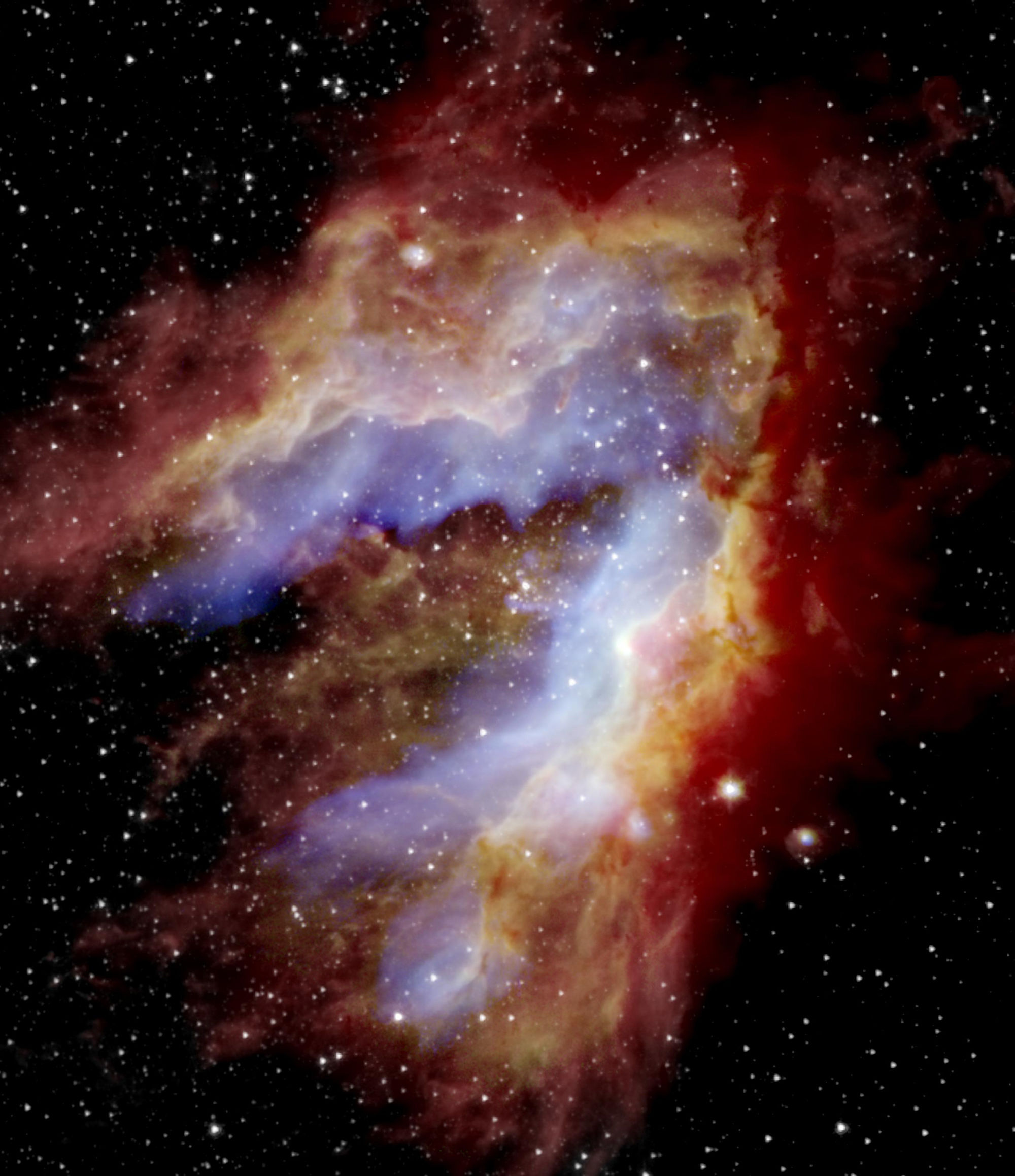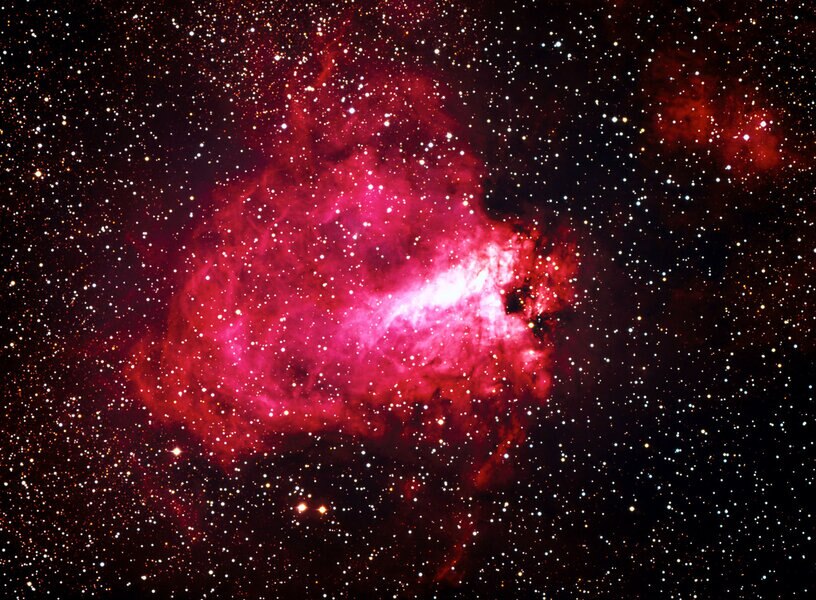Create a free profile to get unlimited access to exclusive videos, sweepstakes, and more!
SOFIA and star birth in the Swan

Nebulae are clouds of gas and dust, and there are untold millions of them in the galaxy. Some are tiny, just knots of material, and others are vast, sprawling across many light years, with complex structures and histories.
One such nebula lies about 5,000 light years away in the constellation of Sagittarius. It goes by many names: Messier 17, the Omega Nebula, the Swan Nebula… it's so big and bright that it's an easy target with binoculars, and through even a modest telescope the looping "omega" shape that gives it one of its names is obvious. Inside that is a brighter patch of gas that does indeed look like a swan (though usually upside as seen in photos); I've seen this myself at the eyepiece.
That part of the nebula is a star factory. Hundreds of stars are being cooked up inside the cloud, star birth set to mass production mode. Small clumps of gas and dust are collapsing, forming dense cocoons around stars just starting to ignite the thermonuclear fires in their cores. From the outside and in visible light these look dark, their thick shells blocking the nascent starlight within.
But if you look in the infrared, outside the colors our eye detects, the light from these protostars leaks through. They can be seen along with the greater clouds of material around them, producing an image that's as lovely as it is scientifically informative:
That is the heart of the swan as seen by not one but three infrared observatories. Besides the type of light they are sensitive to, they have in common something else: They aren't ground based. One is Herschel, a European space observatory; another is Spitzer, a NASA space telescope; and the third is SOFIA, which is also a NASA observatory, but it's not in space. It's on an airplane. Seriously! They literally cut a hole in the side of a 747 and the telescope looks through it, high above most of the bright atmosphere of Earth. Also, infrared is absorbed by carbon dioxide, so getting up to 747 cruising height greatly diminishes that absorption, allowing light from the heavens to be detected.
These three observatories see different structures in the nebulosity. The outer parts (red and orange) seen by Herschel and Spitzer, are mostly dust warmed by starlight. The inner part, though, shown in blue and green, are from SOFIA. The blue is gas, likely glowing due to the energy pumped into it from the already formed stars. The green, though, is more dust, and some it is composed of those proto-stellar cocoons; in these wavelengths light from the not-quite-yet stars forming inside manages to work its way out, making the dust glow.
The astronomers who took the SOFIA images are using the airborne observatory to investigate star formation in big gas clouds, looking for the youngest objects there that haven't actually yet become true stars. They found 9 new compact sources of infrared light in addition to 7 previously known ones. Carefully examining the light from those 16 objects indicates that 7 of them could be what are called massive young stellar objects, massive stars in the process of forming. There are likely far more lower-mass stars forming there, but they may not have the power necessary to be seen in these images.
Along with those objects they were able to observe a compact source called UC1, and found it to be a protostar weighing in at a whopping 64 times the Sun's mass. That's a lot. Low mass stars are common, but higher mass stars are more rare. To find one that massive is exceptional; there aren't many in our galaxy at all. Once it's done forming it won't live long; at that mass it'll fuse hydrogen into helium furiously, burning through its fuel in a couple of million years. After that it will go through helium fusion, then carbon, and up the periodic table until it tries to fuse iron. That's a problem, because it takes more energy to fuse iron than it gets out. A complicated series of extremely rapid events follows, which ends with inevitability: The star will explode, becoming a supernova. At that distance it may be visible to the unaided eye, though it's hard to say since there's so much dust there that will diminish the light. But boom it will go.
The astronomers also looked at the ages of the stars in the nebula and found something interesting: The north part of the nebula (toward the top of the image) is older than the southern part. Most of the very young objects are in the southern part. This shows that star formation can come in waves in a nebula, depending on conditions inside. But this is helpful, since it means these conditions can in principle be measured, allowing astronomers to better understand what triggers star formation in clouds like this one.
The Swan is a summer object for northern hemisphere denizens like myself. I'll be out in the mountains of Colorado a couple of times this summer, where skies are dark. I'll make a point to take a look at this nebula through my 'scope; while the view of it will be substantially different than with SOFIA, it is the same object, and the photons I see will have traveled 50 thousand trillion kilometers from the gas and stars there to my eye. And now, when they do, I'll know a little bit more about what I'm seeing.




























